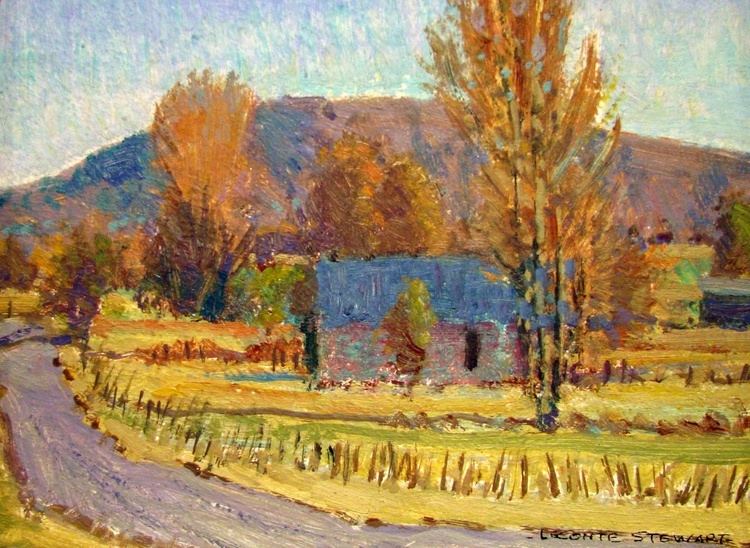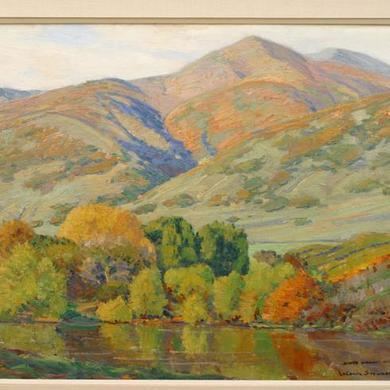Nationality American Spouse Zipporah Layton Role Artist | Name LeConte Stewart Occupation Landscape Artist Parents Anna Eva Heppler | |
 | ||
Education Art Students League of New York, University of Utah | ||
Then and now private car by leconte stewart
LeConte Stewart (April 15, 1891 – June 6, 1990) was a Mormon artist primarily known for his landscapes of rural Utah. His media included oils, watercolors, pastel and charcoal, as well as etchings, linocuts, and lithographs. His home/studio in Kaysville, Utah is on the National Register of Historic Places.
Contents
- Then and now private car by leconte stewart
- Then and now the golden rule layton utah by leconte stewart
- Personal life
- Work
- Legacy
- References

Then and now the golden rule layton utah by leconte stewart
Personal life

Stewart was born in Glenwood, Utah. His art education began in 1912 at the University of Utah, and included studies at the Art Students League summer school at Woodstock, New York, and the Pennsylvania Academy of the Fine Arts in Chester Springs. Stewart became the head of the Art Department at the University of Utah in 1938, and held that post until his retirement in 1956. Stewart died in Kaysville, Utah at the age of 99.
Work

Stewart is best known for his unidealized landscapes of rural Utah, spawning the term "LeConte Stewart Country." Stewart is quoted as saying, "It is not that I love the lyrical in nature the less, but I feel that in modern life there is no time, no inclination for it. In these pictures I'm trying to cut a slice of contemporary life as it is in the highways and biways [sic] as I have found it." Some of Stewart's paintings have a photographic quality from a distance but are actually formed with broad strokes and a thick palette.

Much of his work uses direct impressionistic techniques to convey the meaning of what he saw around him, illustrating things "...that are introspective, that you peer into, that you understand and feel." Stewart stated: "Impressionism is the most important painting innovation of all time....I thought to myself, why not use this technique to express an idea rather than making it the end goal of a painting? I have tried to think of it as a means of interpreting landscaping rather than making it merely impressionistic."
Stewart described himself as having an urgency in his work. A plaque in the Kaysville Gallery of Art reads: "I had a great urgency to work as rapidly as possible. Each Saturday I painted one large 24-by-30-inch picture in the morning and another in the afternoon. Between I painted four smaller studies. Six was an average Saturday for me."
In addition to landscapes, Stewart also did portraiture and murals. He painted several murals for The Church of Jesus Christ of Latter-day Saints (LDS Church) buildings, including works found inside the LDS temples in Hawaii, Alberta, and Arizona, as well as murals for the Salt Lake City International Airport and the historic Bigelow-Ben Lomond Hotel.
Legacy
In 1985 the LDS Church published a collectors item titled LeConte Stewart: The spirit of landscape by Robert Davis, which documented some of his works. 7 November 2002 was declared as "LeConte Stewart Day" in Utah by then Governor Mike Leavitt.
The largest public exhibition of LeConte Stewart's work to date began in Salt Lake City on 21 July 2011 and is scheduled to run to 15 January 2012. It is being jointly hosted by the Utah Museum of Fine Arts and the LDS Church History Museum, with concurrent shows at these museum's individual locations. This is the first collaboration of this kind for these institutions; each hold significant amount of fine art by Utah artists.
